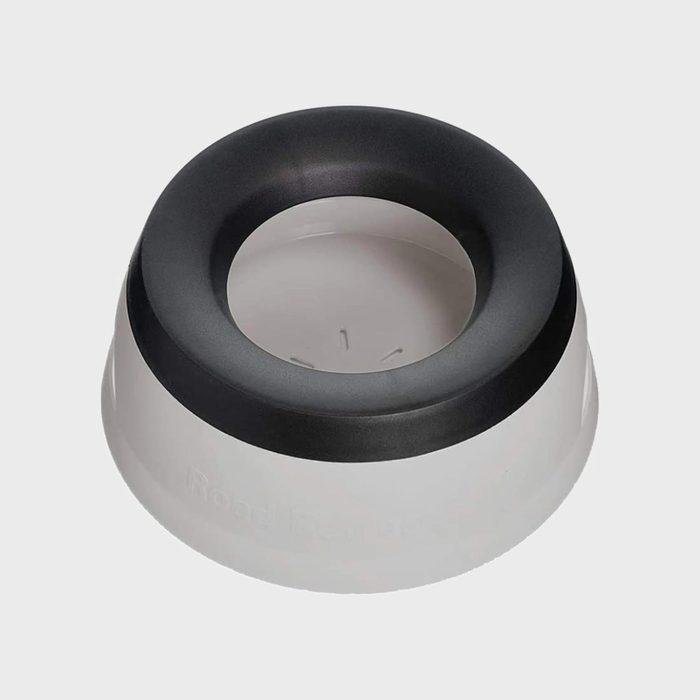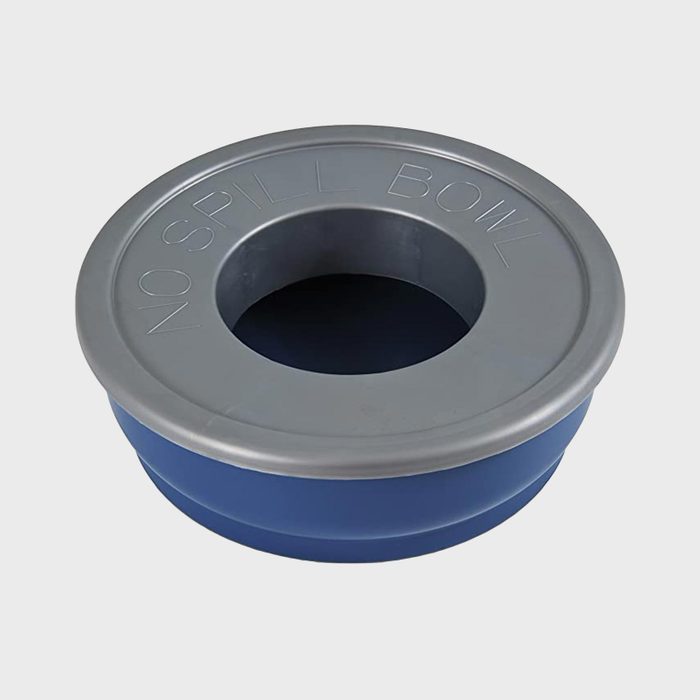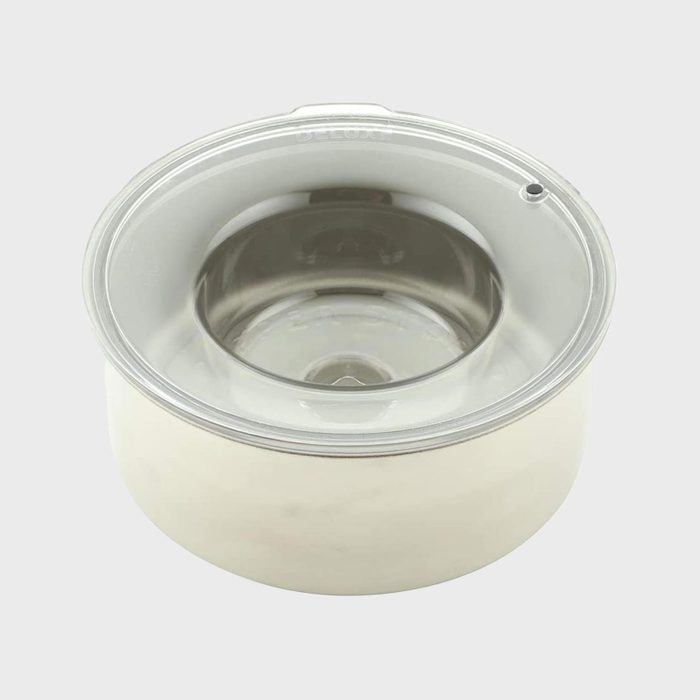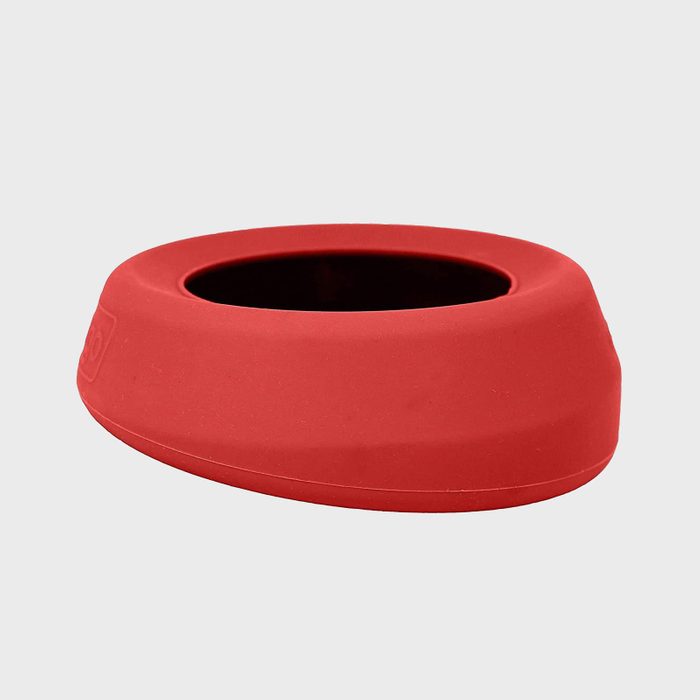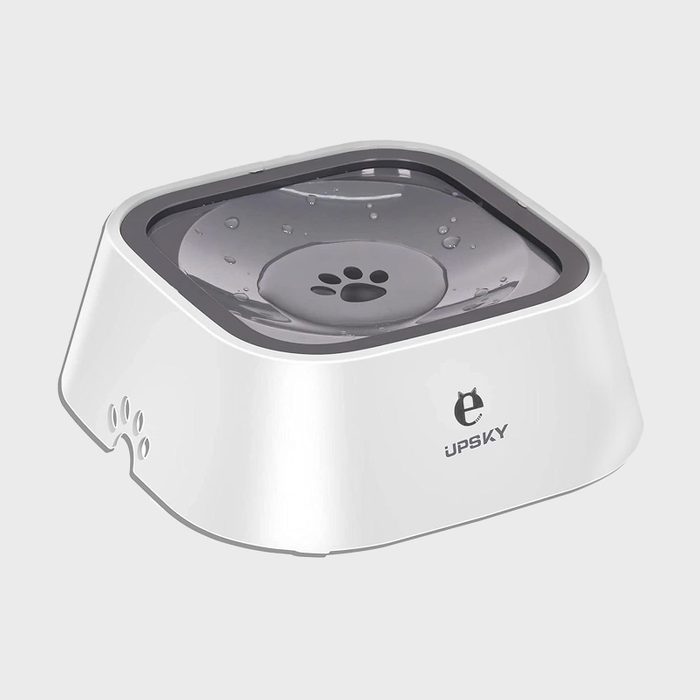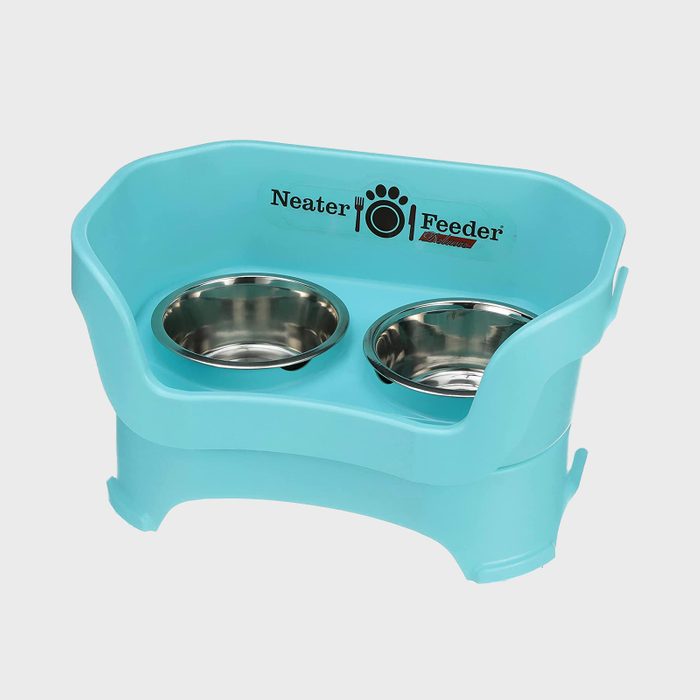via merchant
via merchant
Pros:
-
Low-tech design with simple, effective function
-
Works for containing spilled food and water mess
-
Variety of colors
-
Different sizes for individual needs
-
Dishwasher safe
Cons:
-
Higher cost than some
-
Reviewers note the stainless steel bowls aren’t the best quality and may rust
Here’s a very different option featuring standard-looking stainless steel bowls in a contained elevated feeder station. The Neater Feeder Deluxe for Dogs comes in seven colors, three sizes, and two bowl styles. The elevated plastic surround catches and contains dropped food, and spilled water drains through openings into a reservoir in the base. You can choose plain bowls or slow feeder bowls with raised bottoms to address gulping. The plastic frame has an option for extended legs to raise the level of the bowls. All parts of the Neater Feeder are dishwasher safe. Worried your dog might not like change? Drop a few organic dog treats into the food bowls to persuade him to change allegiance.
What to look for when buying a no-spill dog water bowl
While all dogs use the same drinking technique, some have breed differences or quirky behaviors that influence which no-spill dog water bowl works best. None will eliminate all the mess, but they do help control the spillage.
You’ll find three basic categories: no-spill bowls, no-splash bowls and no-tip bowls, all with the goal of controlling liquid chaos. Some bowls also control drinking speed for dogs that gulp too fast and then vomit. Depending on your dog, you may also need to focus on non-chewable bowls, because some dogs turn bowls into chew toys. Here are a few factors to keep in mind as you shop.
- Wide base: Look for a wide base to reduce the dog’s chance of tipping over the bowl.
- Non-slip bottom: Bowls should have a non-skid surface on the bottom so the dog can’t “chase” it across the floor. Elevated dog bowls can help with this.
- Ease of cleaning: Dog bowls require frequent cleaning or could make dogs sick. Look for dishwasher-safe bowls for convenience.
- Materials: Choose quality materials. Cheaper plastic costs less but may not hold up to regular washing. As it ages, plastic can crack or hold odors and bacteria. Dogs can also chew and destroy plastic, even injuring themselves if pieces get swallowed. Silicone and stainless steel (the veterinarian’s choice) hold up well.
Some chew-aholic dogs, like my first German Shepherd, even chew up a stainless steel bowl. Every dog is different, so match your no-spill dog water bowl to your pet’s needs. Dogs with flat muzzles, like Bulldogs, need wide, shallow bowls. Pointy-nosed dogs like Collies do well with narrower openings. Also, dogs with long furry ears or canine beards need smaller bowls that keep their ears from dragging in the water.
Why you should trust us
As a certified animal behavior consultant and dog owner, I know our pets can and will make a mess. While there’s no denying that fact, there are products we can use to prevent spills and stains. I’ve written over 4,000 articles, many of which revolve around finding the best products for your pet based on my expertise. From touring as the national spokesperson for Purina Kitten Chow “Lifetime of Love” and the Cat Chow “Way of Life” to publishing more than 35 books about pet care, I have years of practical experience with pets to inform my expert advice.
How we found the best no-spill dog water bowls
Our search for the best dog water bowls to prevent spills started as any one of our articles would—with a healthy amount of research. Scouring the web for recommendations from big box stores, online reviewers and fellow writers, we created an initial list. From there, we looked for bowls that could be easily cleaned, were made with quality materials, didn’t cost an arm and a leg and were (of course) spill-proof while not being too ugly.
FAQs
How often do you change a dog’s water bowl?
Dog owners should clean and change their pet’s water bowl daily. This prevents bacteria growth, keeping the water clean and drinkable and your dog safe and healthy.
How much water should a dog drink a day?
Just as larger dogs need more food, they also need more water. To figure out how much water your pup should be consuming daily, multiply their weight in pounds by one ounce. For example, 50-pound dogs must drink at least 50 fluid ounces.
Should each dog have their own water bowl?
If you own two or more dogs, they can share the same water bowl if both dogs are healthy. However, if a dog is territorial over food, separate water bowls may be the way to go.
Should my dog’s water bowl be elevated?
Elevated food and water bowls are a great solution for pets with neck pain, larger dogs and senior citizens. However, every pet has different needs, and elevated bowls can actually cause digestive issues in certain dogs. (They also may cause more spills, but there are elevated no-spill dog bowls that do both.) If you’re unsure what’s best for your pup, consult your vet before taking the plunge.




















